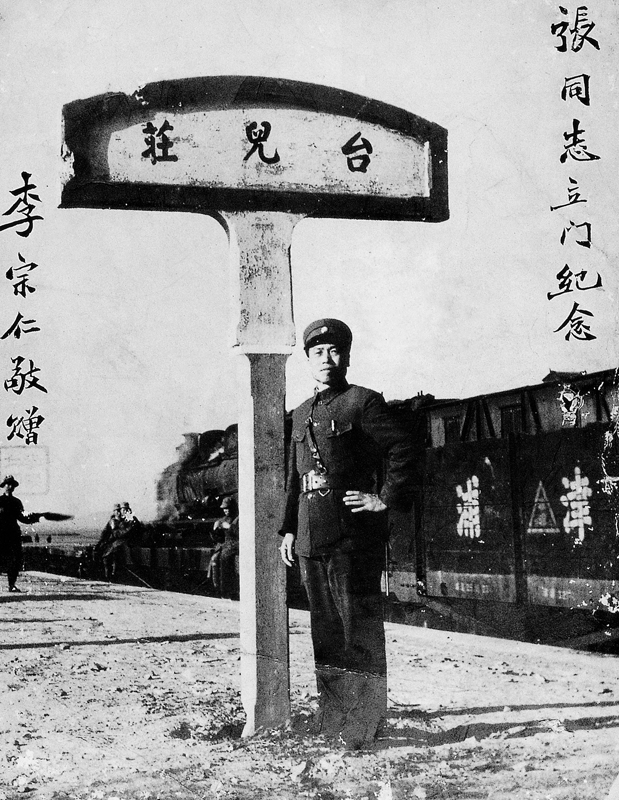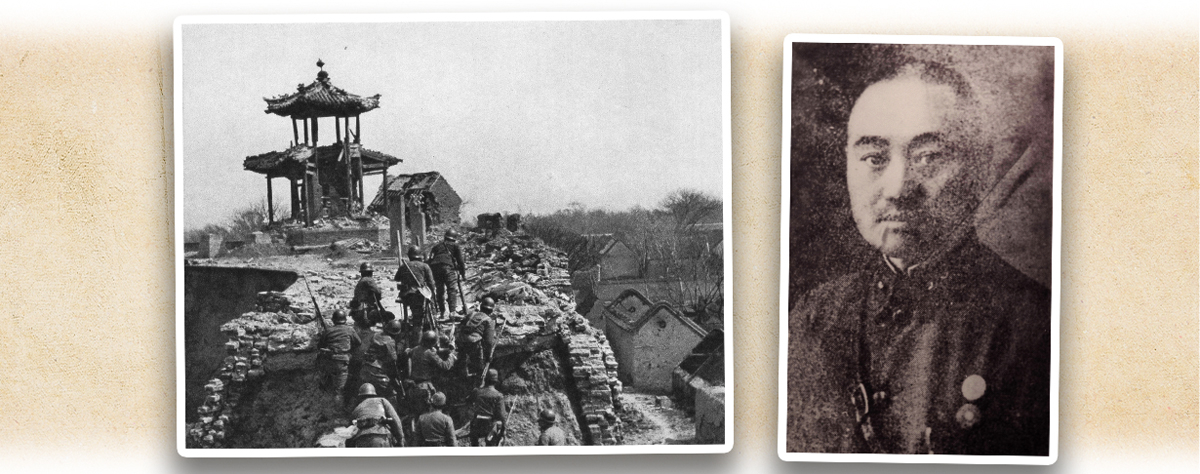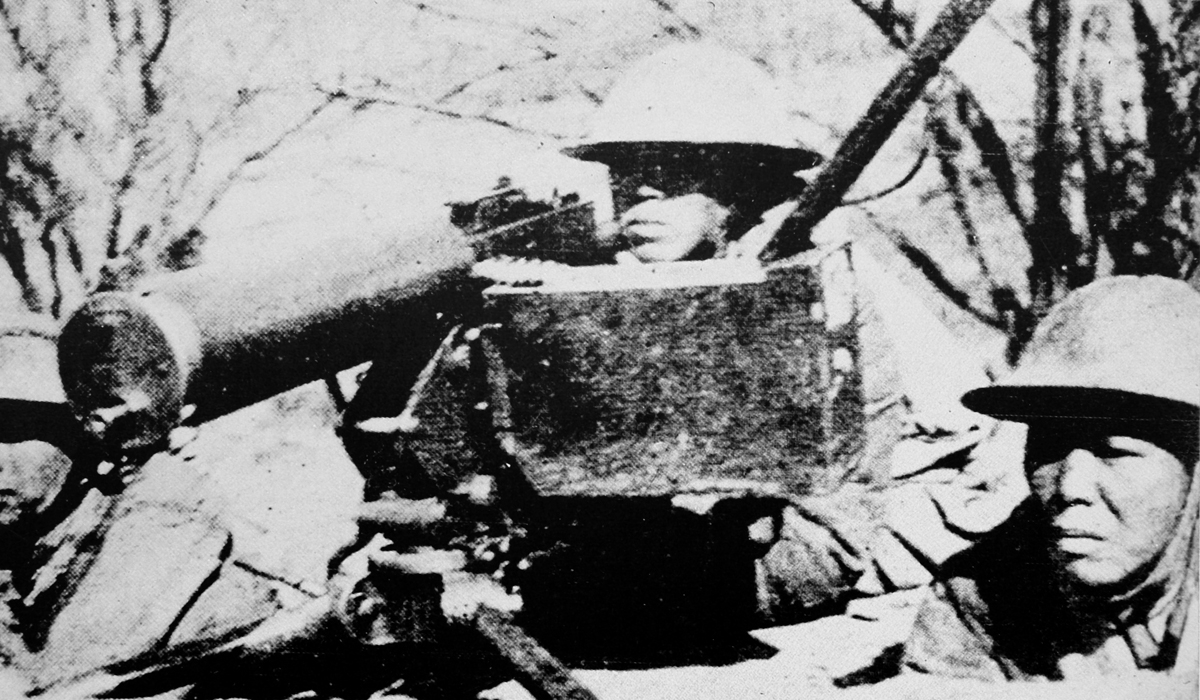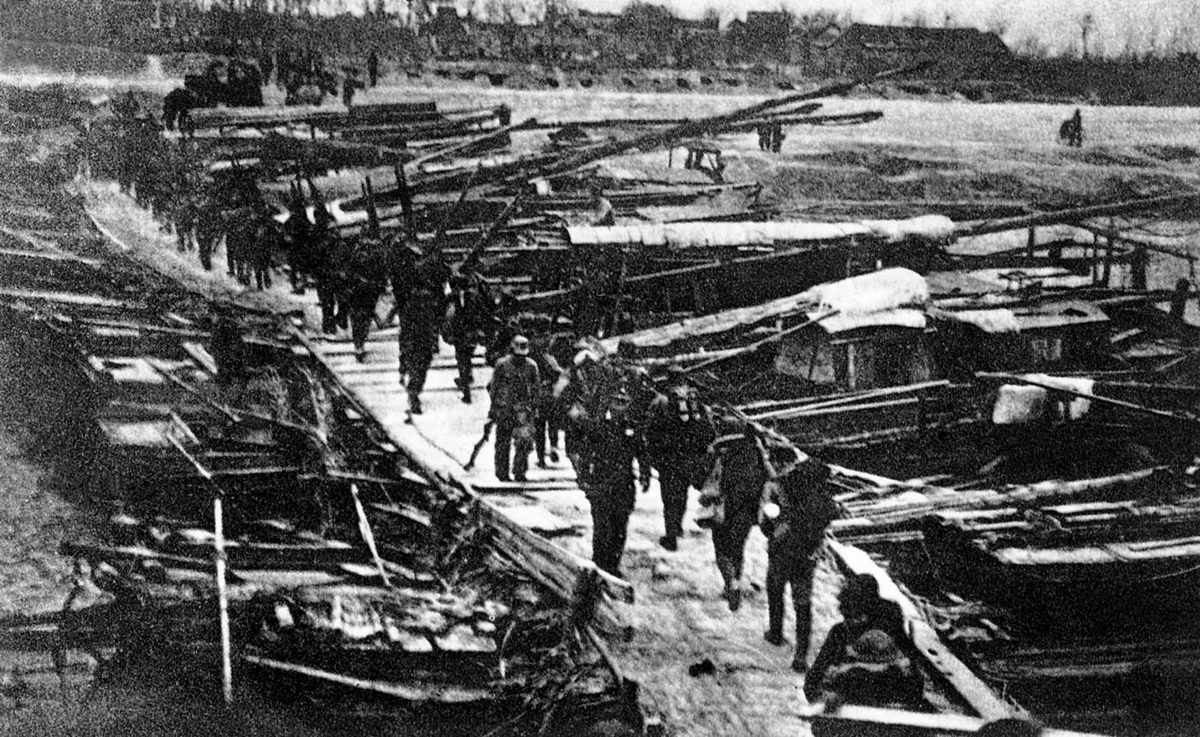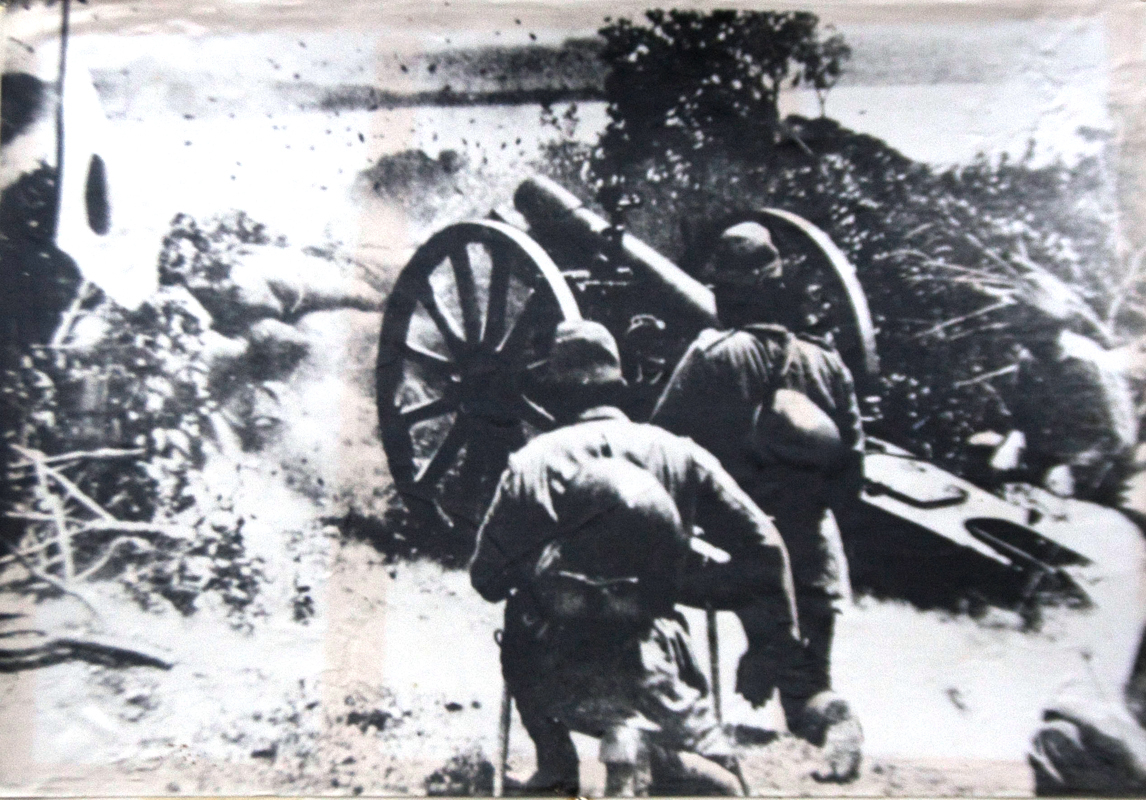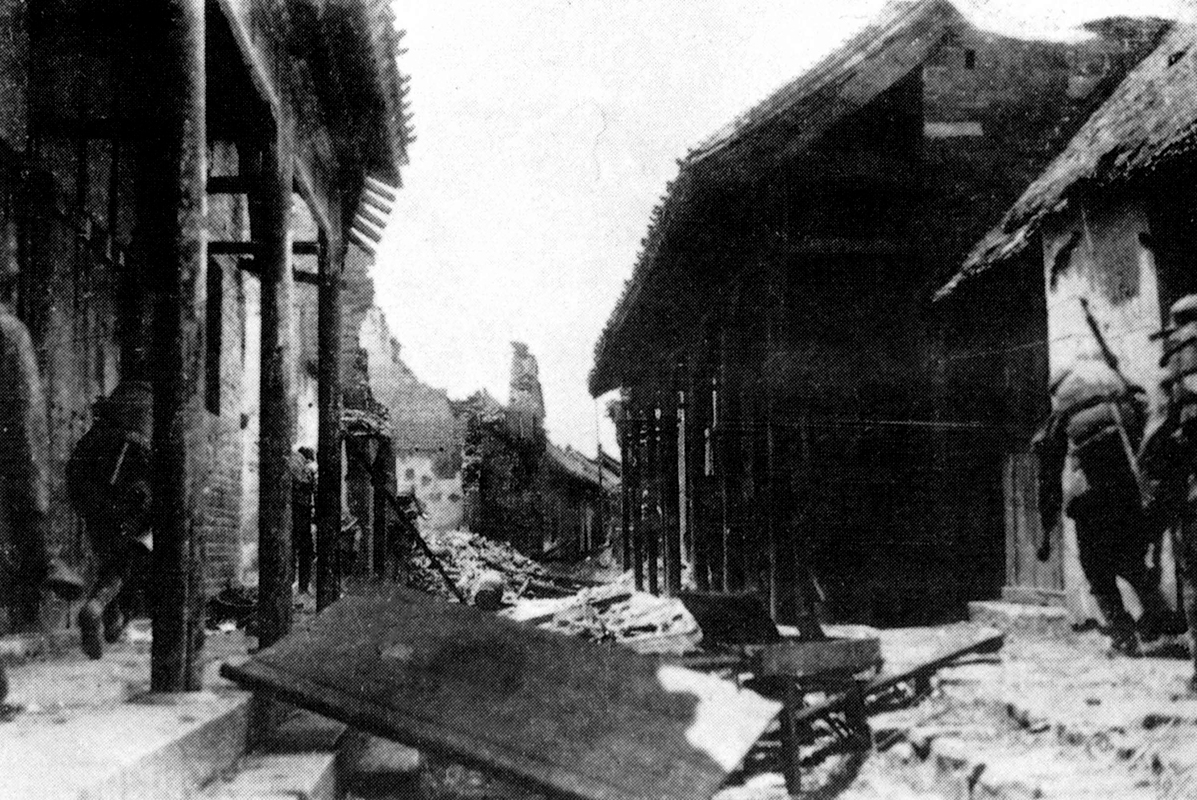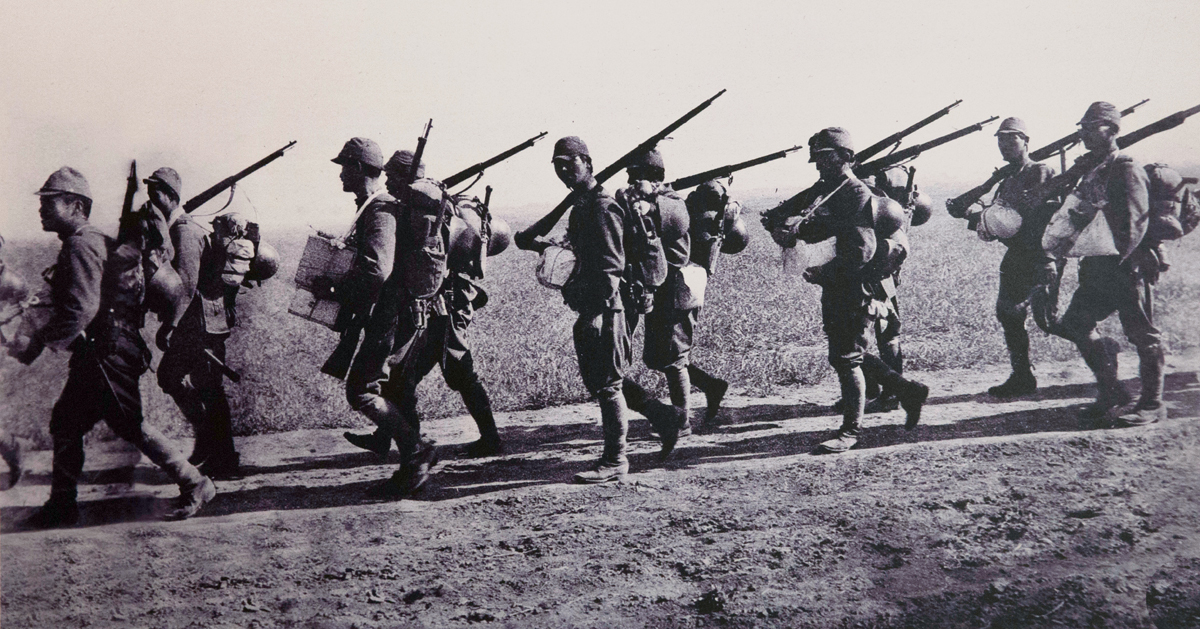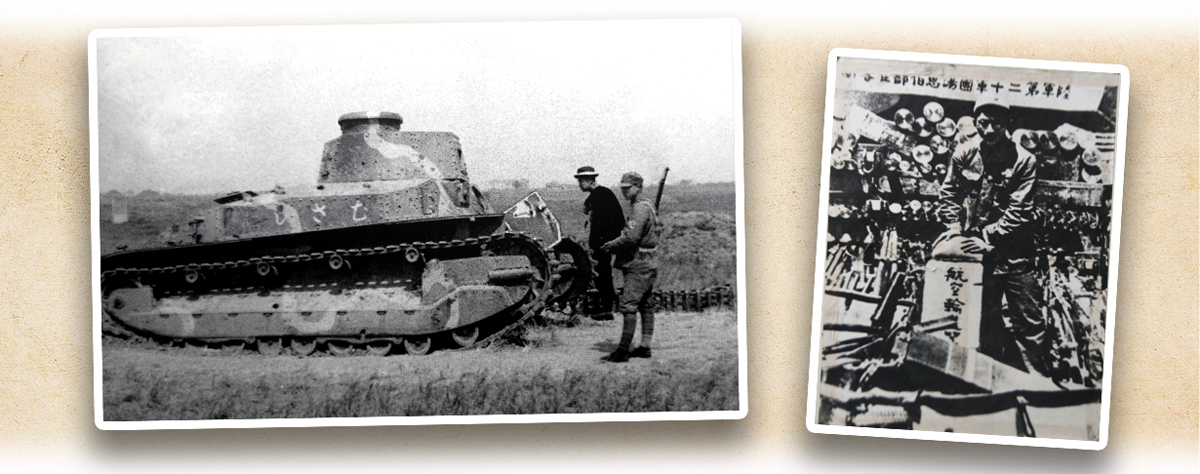After the fall of Nanjing (南京), Japan advanced deep into China’s territory. On 27 December 1937, the Japanese Army captured Ji’nan (濟南), Shandong Province (山東). Using Nanjing and Ji’nan as a base of operation, the Japanese Army aimed at attacking Xuzhou (徐州) along the Tianjin-Pukou Railway (津浦鐵路) so that its southern and northern fronts could be connected. Tai’erzhuang, a key location 30 kilometres to the northeast of Xuzhou on the Tianjin-Pukou Railway along the Grand Canal of China, became the ground the two sides competed for. It was thus became the battlefield of the Battle of Xuzhou.
The Battle of Tai’erzhuang, also known as the Battle of Lunan (魯南會戰, Lunan being the southern Shandong Province﹝山東﹞), took place between 16 March and 15 April 1938. During this month-long battle, the National Revolutionary Army (NRA) committed around 290,000 troops, and the Japanese Army committed around 50,000 troops. The NRA was led and joined by numerous high-ranking officers including Li Zongren (李宗仁), Bai Chongxi (白崇禧), Sun Lianzhong (孫連仲), Tang Enbo (湯恩伯), Zhang Zizhong (張自忠), Guan Linzheng (關麟徵), and Wang Mingzhang (王銘章). During the fighting, Chiang Kai-shek (蔣介石) travelled to Xuzhou to inspect and supervise the operation. The NRA leveraged its superior numbers and took the offensive, forcing the Japanese Army to retreat. Japan suffered around 20,000 casualties, while China around 50,000. This battle is also known in China as the “Great Victory of Tai’erzhuang” and strengthened the determination of the soldiers and civilians nationwide to resist Japanese aggression.
|
|
At the outset of the Total War of Resistance Against Japanese Aggression, Han Fuju (韓復榘) was the Governor of Shandong. Why did he not participate in the Battle of Tai’erzhuang? |
|
|
See answer below. |
The photo of Li Zongren, the Commander of the 5th War Zone, standing at Tai’erzhuang Station before the Battle of Tai’erzhuang in 1938. Li was the key commander of the NRA at the Battle of Tai’erzhuang.
Left: The Japanese forces assaulting Teng County (滕縣) of Shandong in March 1938. Right: Wang Mingzhang (王銘章), the Commander of the 122th Division, died in the Defence of Teng County. The defence was a skirmish before the Battle of Tai’erzhuang.
From 14 March 1938, the Japanese forces launched a fierce assault on Teng County. The Division Commander Wang Mingzhang led his troops to defend the land to death but was killed on 17 March. His remaining troops continued to resist Japanese forces on their own even without their commander. The next day, the Japanese forces captured Teng County. Almost all the 3,000 defending Chinese forces were annihilated in the defence. Wang defended Teng County to death to earn for the NRA more time to create a more favourable situation for the later victory at Tai’erzhuang. Li Zongren once commended, “If the tragic fight at Teng County had not happened, the great victory at Tai’erzhuang would not be achieved. The great victory was attributed to the lives sacrificed at Teng County!”
The NRA erecting a machine gun station at Tai’erzhuang to engage the Japanese Army.
The NRA building a bridge at Tai’erzhuang to cross the river to attack the enemy.
The Japanese forces bombarding Tai’erzhuang Station.
A wooden relief carving of the bloody fighting at Liujiahu Village (劉家湖村) during the Battle of Tai’erzhuang.
The Japanese forces fired 10 cannons from their artillery positions at Liujiahu Village, which was around 2.5 kilometres north of Taier’zhuang, on 24 March 1938. Gao Hongli (高鴻立), the Commander of the 3th Battalion of the 183th Regiment of the 91st Brigade of the NRA, led a dare-to-die corps of 57 soldiers each carrying a machete and eight grenades. They stormed into the enemy’s artillery positions and forced it to abandon the cannons and flee.
The NRA firing at the Japanese Army from the trench during the Battle of Taier’zhuang.
The NRA and the Japanese Army fighting at the streets of Tai’erzhuang.
The Japanese Army retreating after being defeated at the Battle of Tai’erzhuang.
At the Battle of Tai’erzhuang, the NRA seized a massive amount of military weaponry and equipment, including tanks, from the Japanese. This was the NRA’s first major victory after the outbreak of the War of Resistance, which greatly boosted the morale of the Chinese soldiers and civilians.
|
|
At the outset of the War of Resistance Against Japanese Aggression, Han Fuju was the Governor of Shandong. Why did he not participate in the Battle of Tai’erzhuang? |
|
|
The Battle of Tai’erzhuang took place between March and April 1938. However, Han Fuju died in January that year. He long held the post of Governor of Shandong and the rank of lieutenant general. At the beginning of the war, Han took part in some of the campaigns against Japan. However, due to the conflicts with Chiang Kai-shek and in order to preserve his own power, Han ignored orders from the Nationalist Government. He refused to obey Li Zongren, the Commander of the 5th War Zone, and withdrew from the Shandong battlefield without permission. Chiang later captured him in Kaifeng (開封) and convicted him in January 1938. He was soon executed by the secret service of the Bureau of Investigation and Statistics, Chiang’s intelligence agency, in Wuchang (武昌) on 24 January 1938. |
Source of most photos used in this feature piece: Fotoe.





